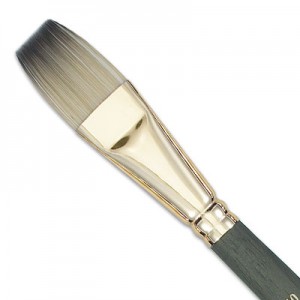Learn the Oil Painting Technique: Blending
Color blending is a technique wherein two colors are combined to create another color. Each color has a separate blend factor that determines how much of each color is combined into the final product. There are different ways to blend colors and different ways with different medium. Today, I will share some techniques in color blending using oil paints.
How to start?
Once you’ve decided what colors you want to blend to create an effect, you might want to blend small amounts of each and check if it’s the color you’re looking for then you can make necessary adjustments. Move the brush in a way from one color into the other and back or in a zigzag motion. Wipe off any paint from your brush before you start blending or better yet, start with a clean, dry brush so you won’t add any extra paint that is not part of your color scheme.

by Gina De Gorna
Image source: http://sunsetartonline.com
How to blend on canvas?
You don’t want the colors mix equally so stroking your brush sideways at least initially or else you’ll have strips of concentrated colors in your blended color. Remember to keep your strokes short and picking different percentages of blending. Keep repeating until it blends. As your tip gets thinner you get a smoother result, and once is smooth enough you can use blur or smudge tool to finish the job in case you want perfect gradients. If you think your blended color is not blending well or it’s too concentrated on canvas, all you need to do is to pick up a little fresh paint in the color that’s at risk of being lost then work from the outside or the darker shade until its blended. You can take your time blending with oil paints because they dry slowly unlike with acrylic paints.
 What type of brush and brushstroke is best to use in blending?
What type of brush and brushstroke is best to use in blending?
Create a transition between the first two shades using a crosshatch stroke. Flat brushes tend to work best for blending. Smooth the blend by using parallel strokes along the transition you just created. The parallel strokes should be perpendicular to the lighter shades. Use a clean brush to blend the next shade, and repeat the technique using first crosshatched strokes followed by parallel stokes. A clean brush should always be used when working with a new shade, even if the actual color is the same.
